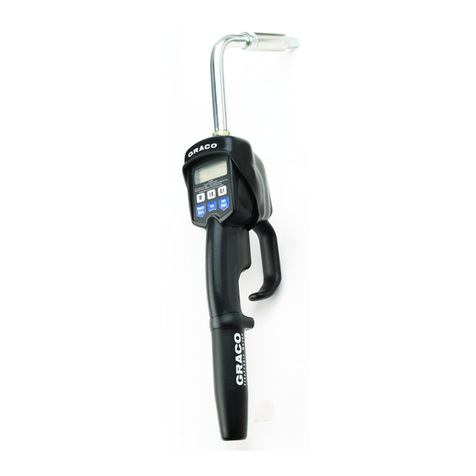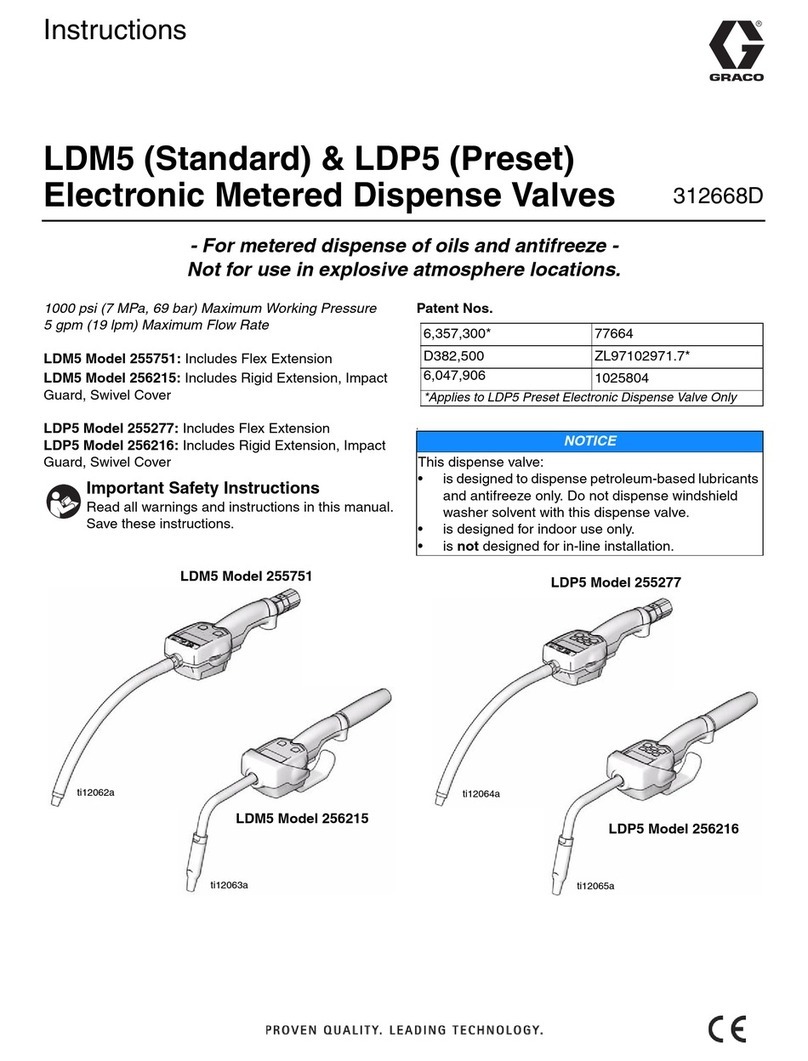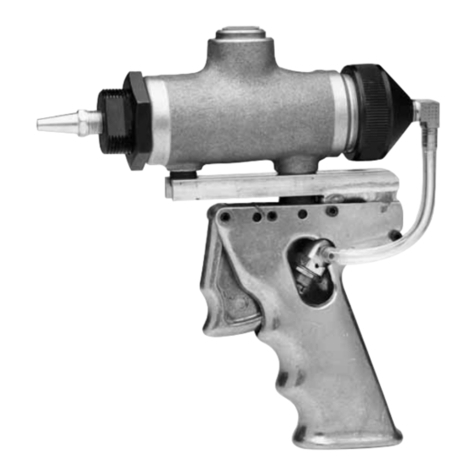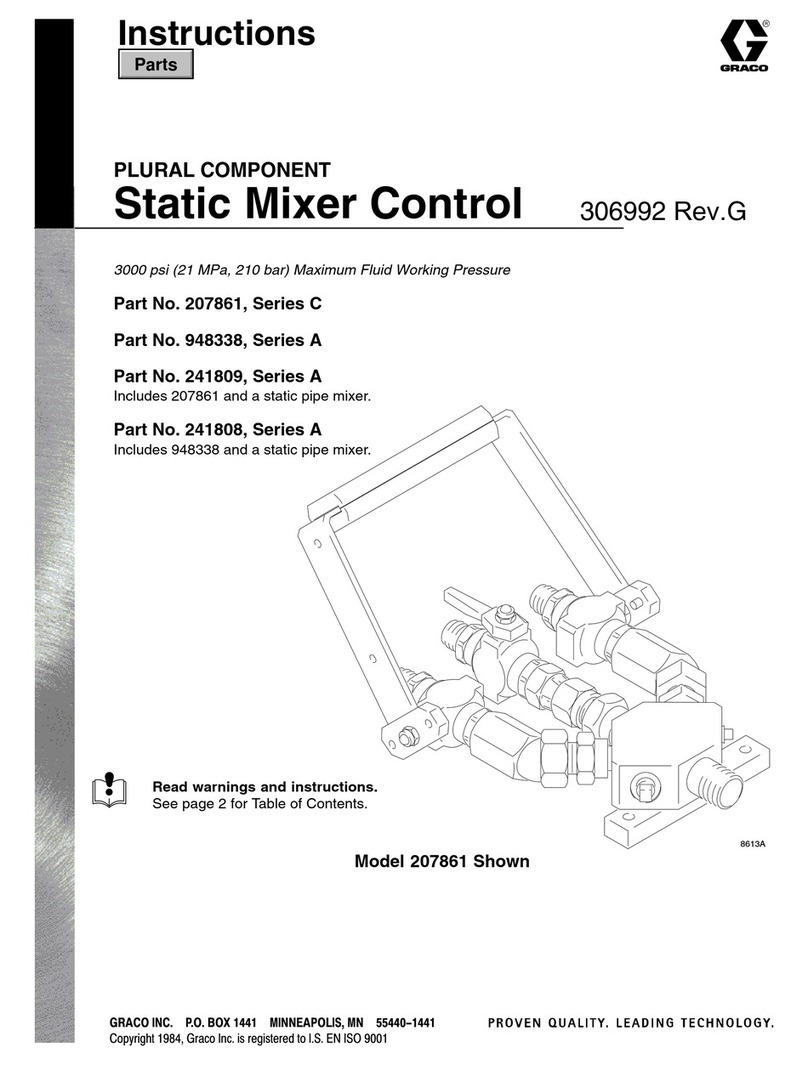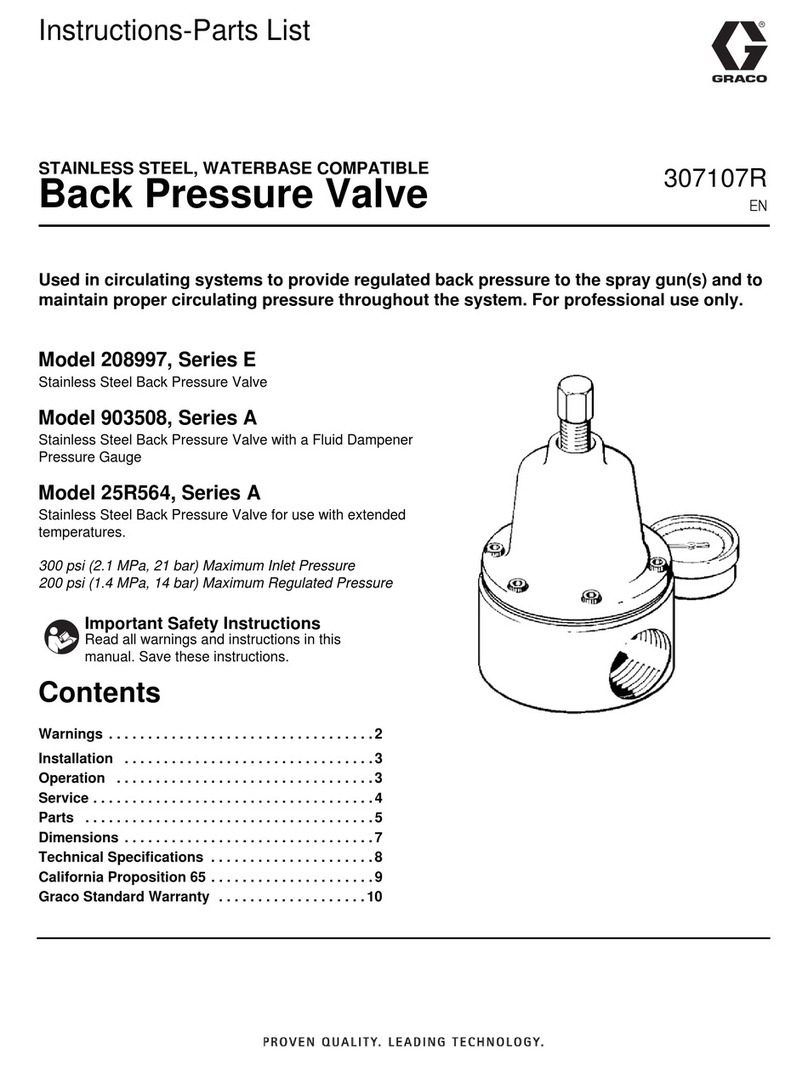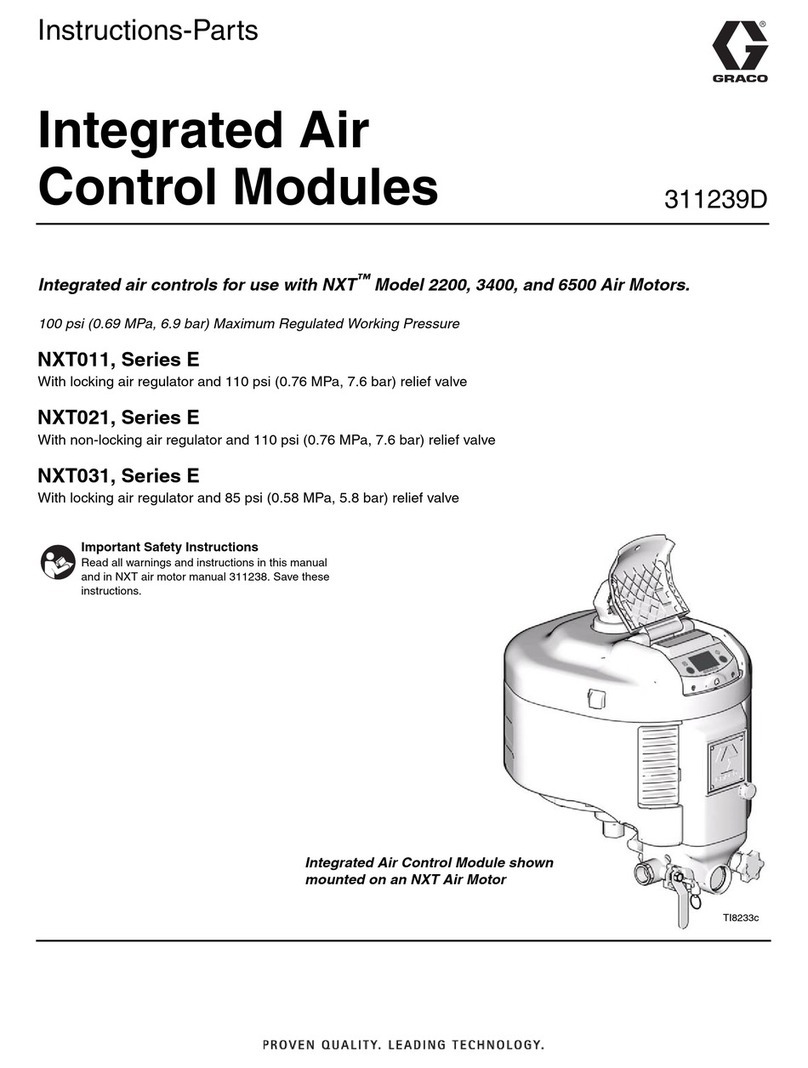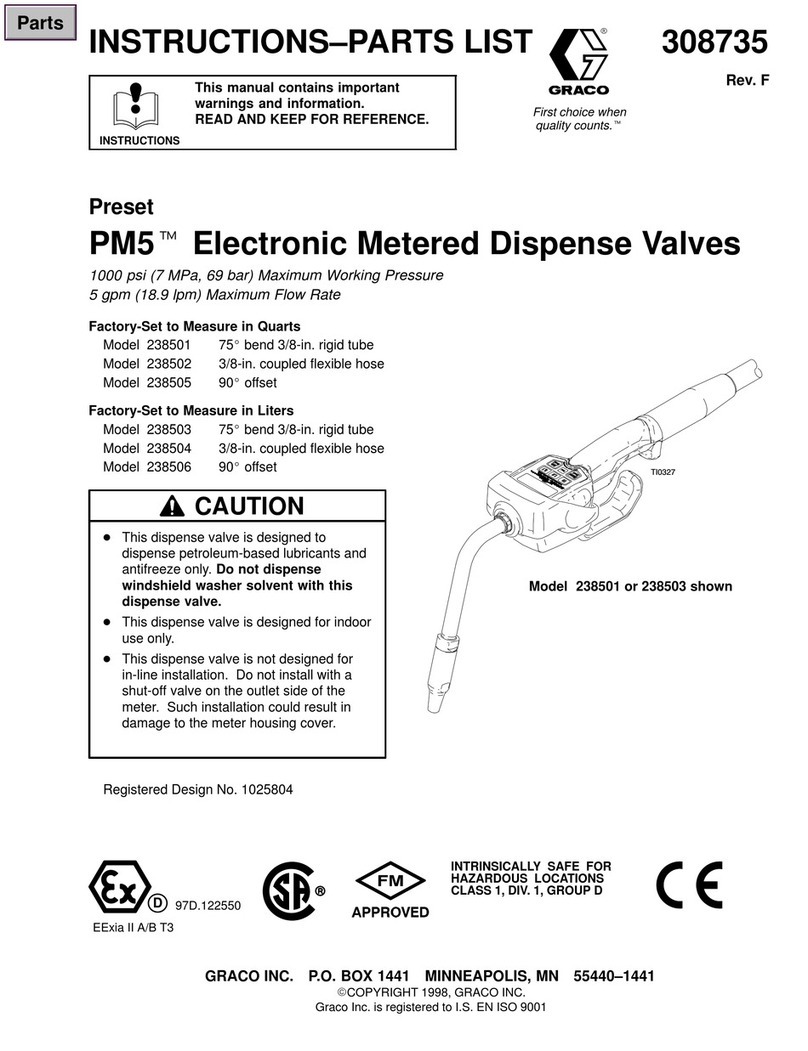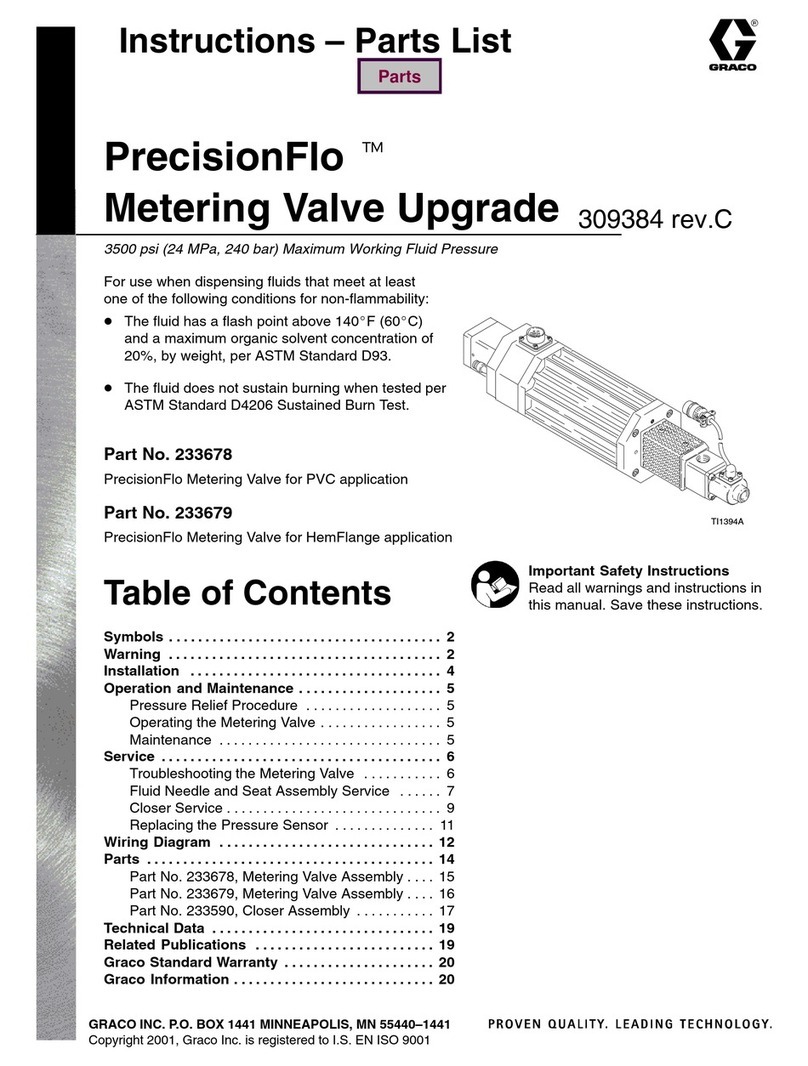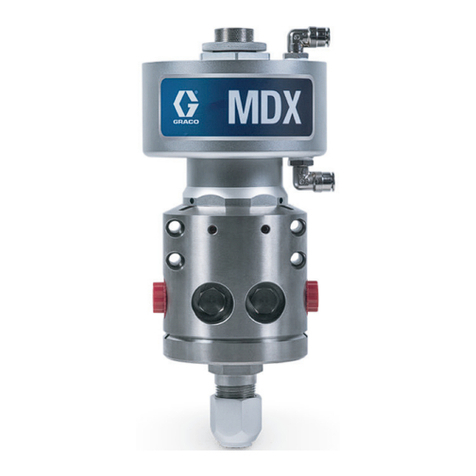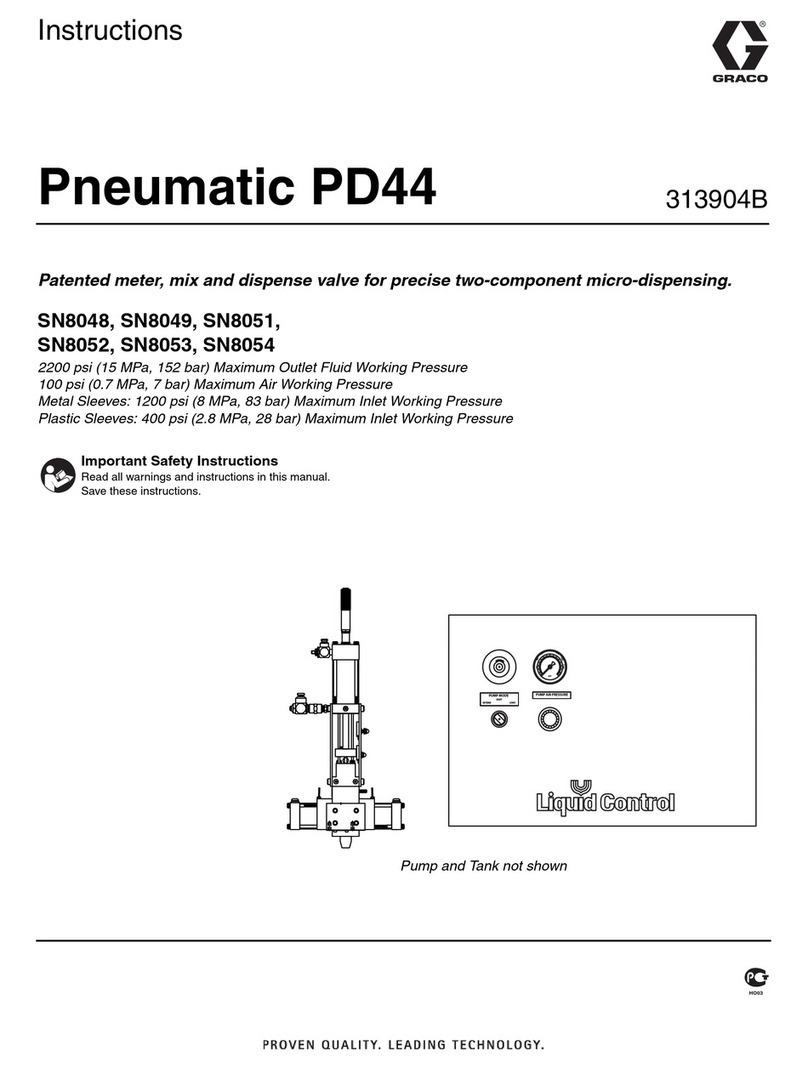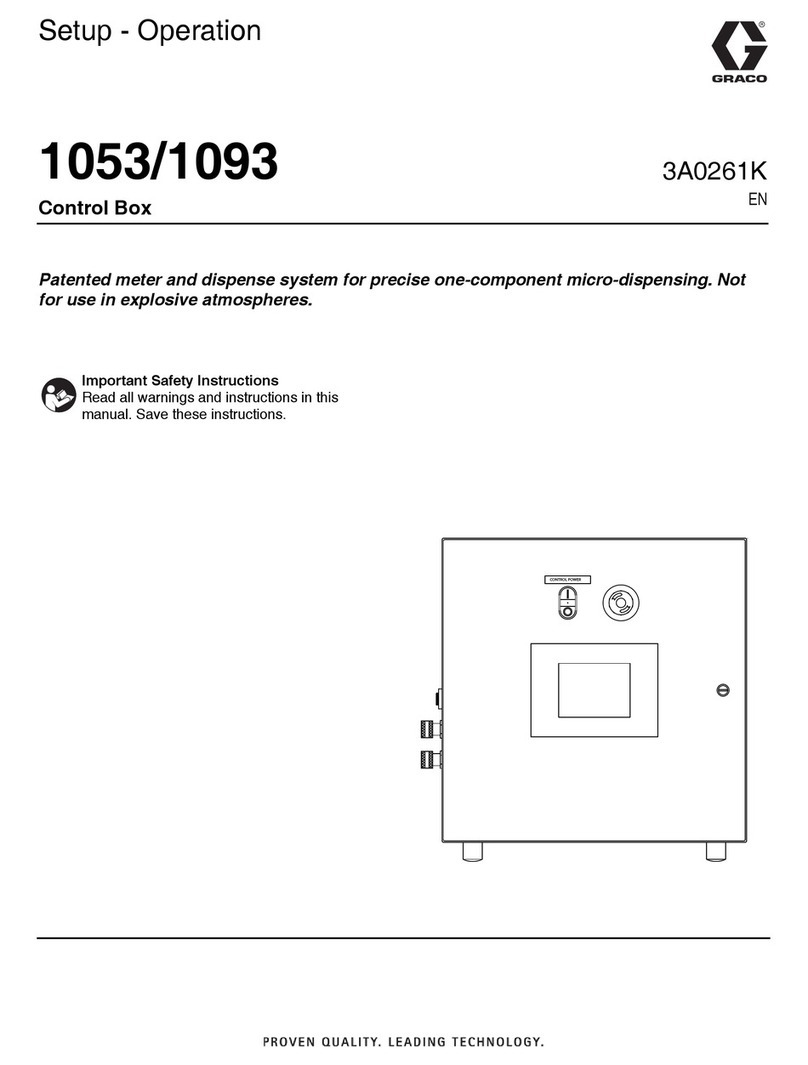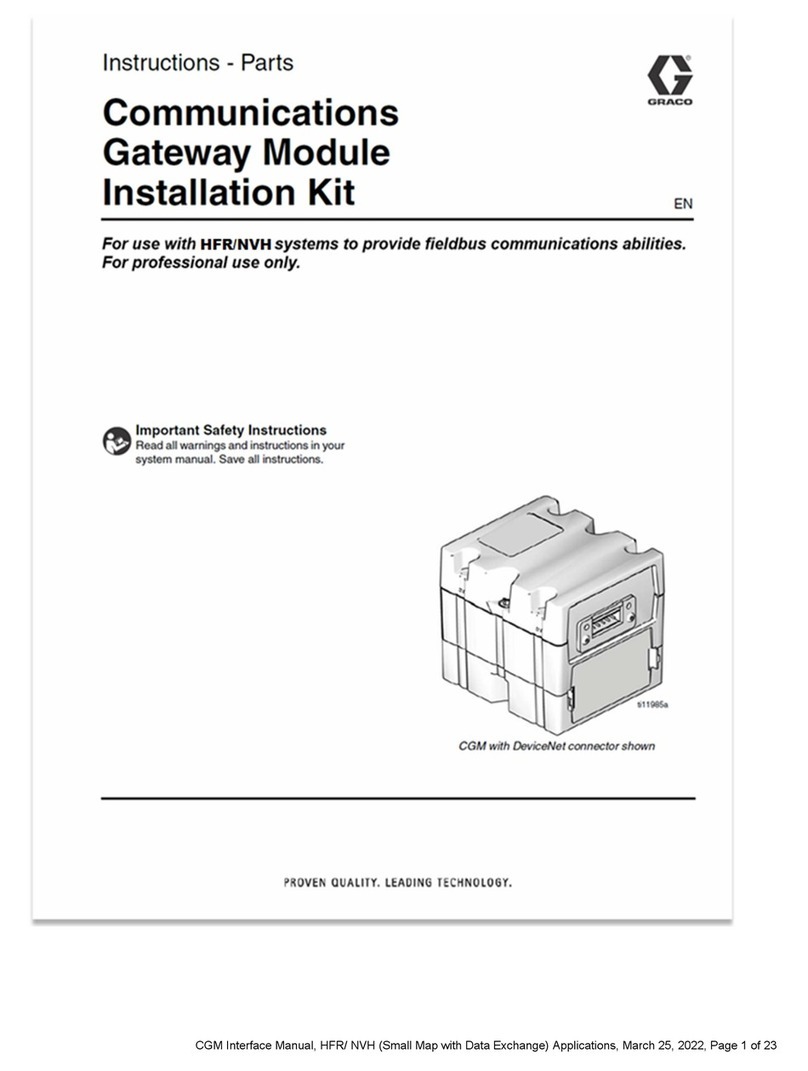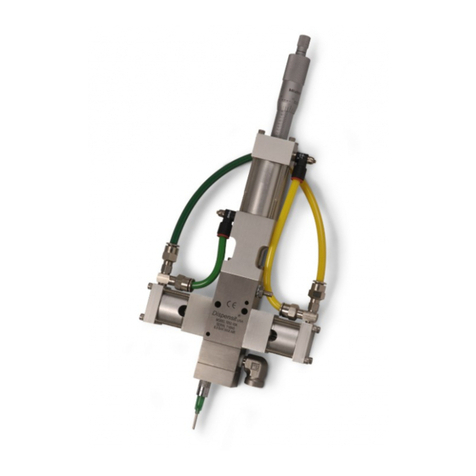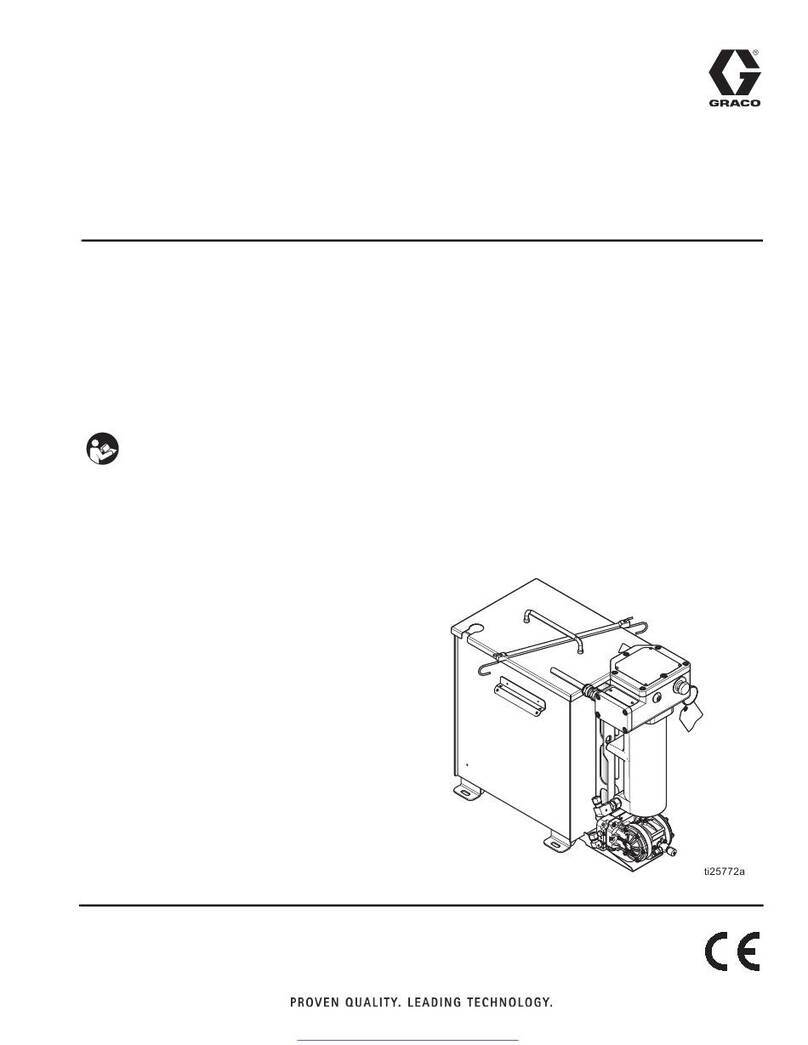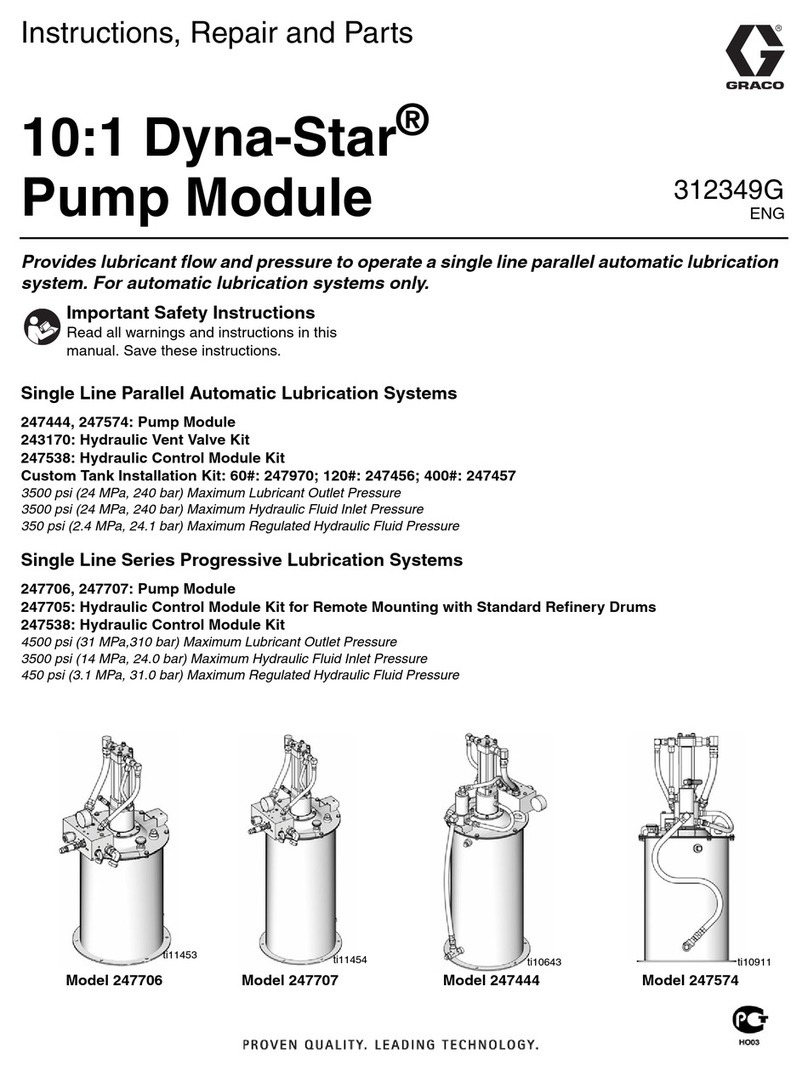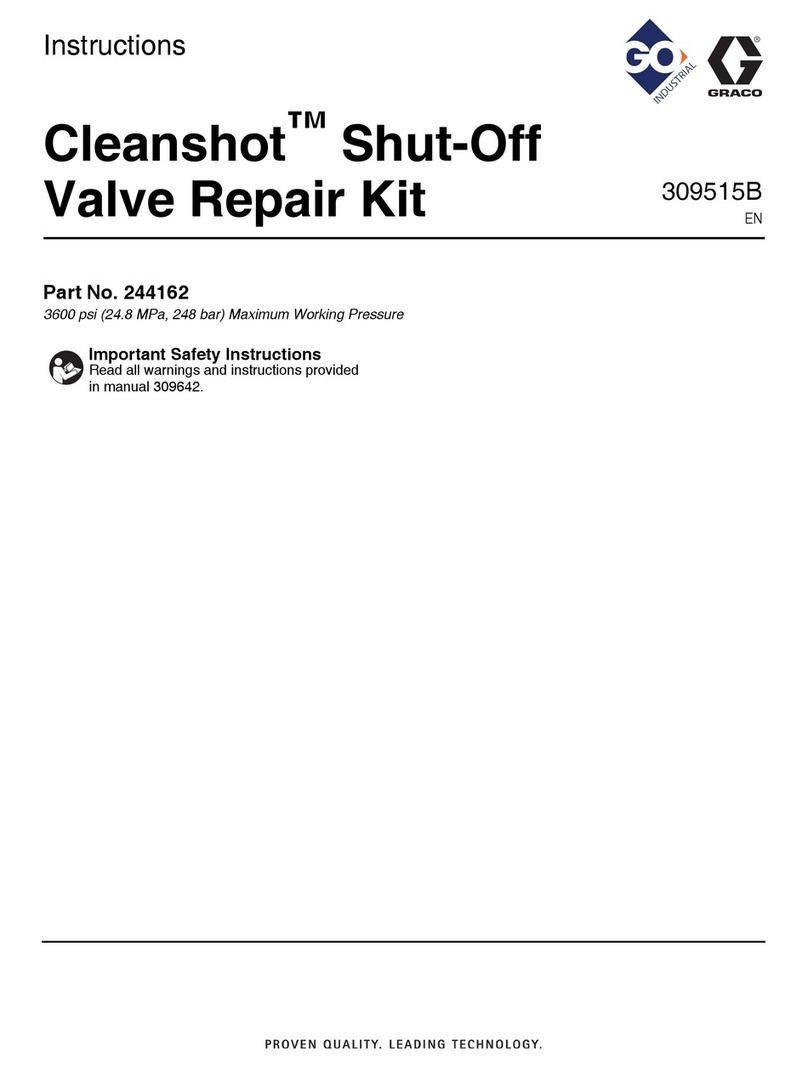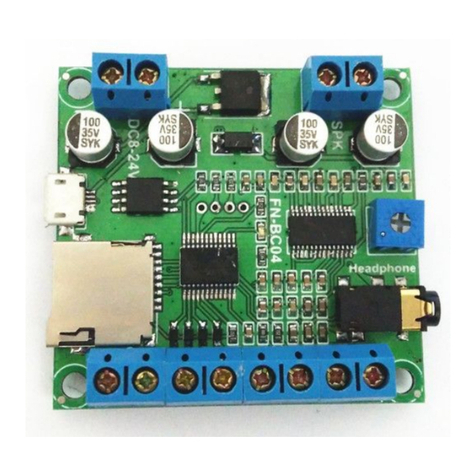
SERVICE
TOOLS REQUIRED
.
.
.
.
.
.
.
.
.
.
IO mm socket wrench
t 1 I1 6” socket wrench
Adjustable wrench
Torque wrench
I” crow%-foot
I//;;;3 mm) brass rod, or a press
Small needle-nose pliers
O-ring pick
Thread lubricant
DISASSEMBLY (See the Parts Drawing on page 7)
NOTE: Reoair Kit 224-937 is available to service the dia-
l. Follow the Pressure Relief Procedure Warning in
your separate pump manual. Shut off the main air
valve. Tighten the locknut (24) to lock the valve at its
current adjustment. Remove the runaway valve
from the air line.
2. Place the valve in a vise with the T-handle (2) facing
left and the poppet valve cap (25) facing upward.
Unscrew the adapter (34) from the valve outlet.
3. Using an adjustable wrench on the flats, unscrew
the stem guide (17) from the lower housing (22).
The adjustment screw (21) will come free with the
stem guide and connecting parts.
4. Reach into the valve outlet and push out the piston
(16). Remove the o-rings (6,36) from the piston.
5. Insert a brass rod into the valve outlet so it contacts
the valve body (16). Tap the rod with a mallet to un-
seat the valve body. (This can also be done with a
press.) Push the valve body out of the housing (22).
6. Remove the o-rings (5, 7) from the valve body (16).
Remove the gasket (13) from ih& housing (22).
7.
a.
Using an 1 l/16” socket wrench, loosen but do not
remove the cap (25) from the upper housing (23).
Using a IO mm socket wrench, remove the four
screws (9) .and lo&washers (I). Pull the upper
housing (23) away from the lower housing (22). Re-
move the diaphragm (27).
9.
10,
11.
Unscrew the cap (25) from the upper housing (23).
Remove the gasket (IO) from the cap. Remove the
poppet valve spring (1 I). Push down on the poppet
so the dowel pin (6) protrudes from the hole on the
inside of the housing (23).
Remove the poppet (14), push pin (15), and o-ring
(1) from the upper housing (23). Working on the in-
side of the housing (23), grasp the dowel pin (6) with
a needle-nose pliers and pull it.out of the housing.
Unscrew the valire housing (19) and pull the RESET
valve assembly out of the upper housing (23).
NOTE: The RESET valve assembly is press-fit together.
Do not disassemble it unless the needle (20) or
valve housing (19) require replacement.
6 308-201
phiagm and o-rings. For best results, use all
parts in the kit. Parts included in the kit are
marked with an asterisk (for example, 4*).
NOTE: The TEST valve assembly is also press-fit lo-
gether. Do not disassemble it unless it is leaking
and the parts require replacement.
12. Clean all parts and inspect for damage. Se sure to
clean all air passages, cavities, and surfaces.
REASSEMBLY (See the Parts Drawing on page 7)
1.
2.
3.
4.
5.
6.
7.
a.
9.
Place the upper housing (23) in a vise. Install the RE-
SET valve In the upper housing. Tighten the valve
housing (19) to secure.
Install the diaphragm (27’) in the lower housing (22)
so the larger center plate of the diaphragm is facing
outward. Align the four large holes in the diaphragm
with the four threaded holes in the housing.
Lubricate the dowel pin (6). Working from the inside
of the upper housing (23), insert the pin (6) into the
small center hole. Push the pin all the way in, so it is
flush with the surface of the housing.
Place the lower housing (22) in a vise. Position the
upper housing (23) so the boss (marked RESET) is
oriented as shown, and the four holes are aligned
with the holes in the diaphragm (27) and lower
housing (22). Assemble the two housings using the
four screws (9) and lockwashers (I). Using a 10 mm
socket wrench, torque to 50-70 in-lb (5.6-7.9 N.m).
Lubricate the o-ring (4*) and install it on the push pin
(15). Install the valve poppet (14,) on the barbed
end of the push pin. Insert these parts into the cen-
ter hole of the upper housing (23), with the poppet
(14) facing outward.
Install the spring (Ii*) in the upper housing (23) and
seat it on the poppet (14). Install the gasket (IO*) on
the spring retainer cap (25). Apply thread sealant to
the threads of the retainer cap. Screw the cap into
the housing using an 11/16” socket wrench, and
torque to 50-70 in-lb (5.6-7.9 N.m).
Install the gasket (13*) into the lower housing (22),
making sure it seats on the inside shoulder.
Lubricate the two o-rings (5*, 7*). Install the larger
o-ring (5*) in the outside groove of the valve body
(I@, and the smaller o-ring (7*) in the inside groove.
Slide the valve body into the lower housing (22),
with the end holding the o-rings facing intd the
housing. Use a brass rod and mallet (or a press) to
seat the valve body securely in the housing.
Install the two o-rings (6*, 36’) in the grooves of the
piston (16). Slide the piston into the valve body (16),
with the narrow end facing inward. Push the piston
into the valve body as far as it will go.
10. Turn the adjustment screw (21) all the way counter-
clockwise, then install it and the stem guide (17) in
the lower housing (22). Use a 1” crow’s-foot to
torque the guide to 20-30 R-lb (27-41 N.m). so its
shoulder is flush with the surface of the housing.
11. Screw the adapter (34) into the valve outlet. Rein-
stall the runaway valve inthe air line. Adjust and test
the valve as described on page 4.
